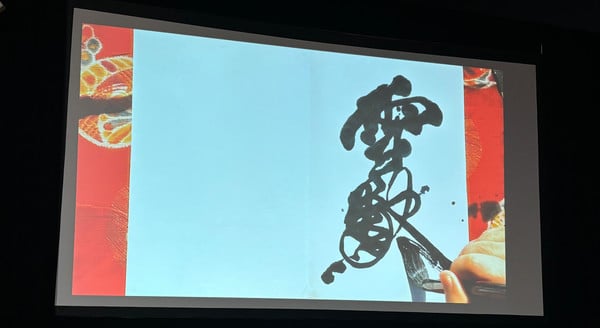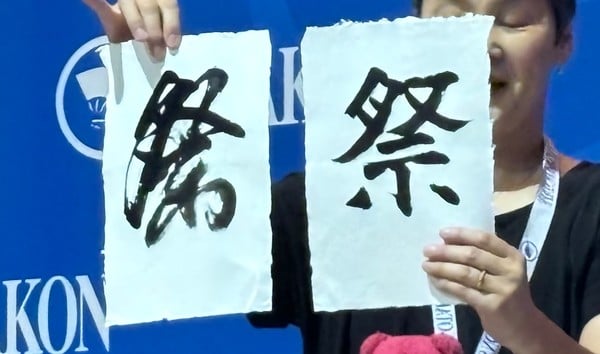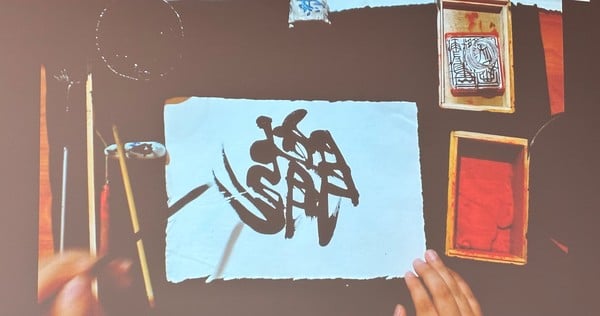All the Announcements from Otakon 2024
Career in Calligraphy from Garo -VANISHING LINE- to Jujutsu Kaisen
by Coop Bicknell,

Known for his work on anime titles such as Jujutsu Kaisen, Dorohedoro, and Attack on Titan, Setta is an artist who synthesizes traditional and digital techniques to create striking art. As I walked into his Otakon panel, I could see this fusion of styles in the man himself. His salt-and-pepper ponytail gave off the aura of a master calligrapher, but the zip tie holding his hair together painted him as an accomplished street artist. Based on that observation alone, I found myself intrigued to learn more about him and his process.
Setta started this artistic journey roughly twenty years ago, thanks to his fascination with graffiti and street art. After thoroughly experimenting with multiple mediums, he fell in love with the brush—specifically the unpredictability and imperfection of the work it produces. However, that didn't stop him from experimenting with even more mediums. The possibilities of digital art quickly caught his eye. He soon thought to combine his growing digital and traditional talents into something greater—something more than just calligraphy.
LIVE Brush Drawing with Setta #Otakon2024 pic.twitter.com/0SnpM855Nl
— ANN Events (@ann_events) August 6, 2024
Over the years, the artist has worn many hats across the multiple productions he's taken part in. To list a few examples, he's provided bespoke episode title cards for Drifters, the rose-sprouting logo of Adult Swim's Fena: Pirate Princess, and even background animation elements in series like Ninja Kamui. But no matter the project, Setta dedicates himself to putting strength and beauty into everything his brush (or Apple Pencil Pro) touches.

I saw this dedication for myself as he whipped out a small brush, a piece of paper, and a bowl of sumi ink in front of the panel's attendees. Then, in mere seconds, he produced a series of pieces demonstrating the shift from traditional calligraphy styles to one all his own—all using the kanji for “Matsuri” or “Festival.” While moving the ink around, Setta demonstrated the use of his Rakkan (a large cousin of the Hanko stamps) by pressing it into red ink and stamping it on each of his creations.
Not long after, he switched to his iPad to demonstrate how he plays with the negative space of any given kanji he may write. Just by tweaking the characters' space, Setta can morph any character into a new, exciting piece of art. He continued to reveal how he often merges digital elements (such as a distressed paper background) with freshly inked calligraphy. As the panel neared its conclusion, Setta continued to display his prowess in ink pieces created for some lucky attendees. With each new brushstroke committed to paper, the calligrapher continued to elevate the inherent beauty of each word that left his brush.

After seeing this beautiful marriage of traditional and modern techniques for myself, I couldn't stop thinking:
“Now, this is the kind of wordplay I can get behind.”
discuss this in the forum (1 post) |